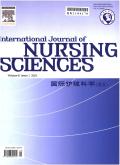无产妇女第二产程不同分娩体位的有效性:系统综述和网络荟萃分析
IF 3.1
3区 医学
Q1 NURSING
引用次数: 0
摘要
目的通过系统回顾和网络荟萃分析,评价不同分娩体位对减少第二产程持续时间的效果,为产科机构指导分娩体位相关干预提供循证见解。方法采用PubMed、Web of Science、Cochrane Library、Embase、万方数据库、中国国家知识基础数据库(CNKI)、中国科技期刊数据库(CSTJ)、中国生物医学光盘(CBMdisc)等数据库进行综合文献检索,确定不同分娩体位对缩短第二产程持续时间的影响。检索包括从数据库建立到2024年9月30日发表的随机对照试验。使用Cochrane风险偏倚工具评估研究的质量。两名独立审稿人筛选文献、提取数据并评估研究质量。随后,使用STATA软件进行网络meta分析。该研究方案已在PROSPERO注册(CRD42023428217)。结果本研究分析了25项随机对照试验的数据,涉及9844名女性。结果表明,与取石体位相比,自由体位(MD = 20.53, 95% CI[11.38, 29.68])和直立体位(MD = - 24.13, 95% CI[- 42.94, -5.32])在缩短第二产程方面具有优势。自由体位优于跪姿(MD = 21.48, 95% CI[4.67, 38.28])和蹲姿(MD = 23.43, 95% CI [1.88, 44.97]);直立位优于跪位(MD = - 25.08, 95% CI [- 46.93, - 3.22]);半卧位优于蹲位(MD = 19.71, 95% CI [2.05, 37.38]);直立体位也优于蹲卧体位(MD =−27.03,95% CI[−51.48,−2.57])。从累积排位曲线(SUCRA)下的面来看,直立体位对缩短第二产程最有效(87.4%),其次是自由体位(81.1%)、半卧位(70.0%)和侧卧位(62.3%)。结论本研究结果为助产实践提供了有价值的见解,并有助于指导未来的研究方向。考虑到本综述的局限性,需要更大规模、多中心的随机对照试验来进一步评估不同分娩体位在减少第二产程持续时间方面的相对有效性。本文章由计算机程序翻译,如有差异,请以英文原文为准。
Effectiveness of nulliparous women’s different childbirth positions during the second stage of labor: A systematic review and network meta-analysis
Objectives
A systematic review and network meta-analysis was conducted to evaluate the effectiveness of different childbirth positions in reducing the duration of the second stage of labor, providing evidence-based insights for obstetric institutions to guide interventions related to childbirth positions.
Methods
A comprehensive literature search was conducted in databases, including PubMed, Web of Science, the Cochrane Library, Embase, Wanfang Databases, China National Knowledge Infrastructure Databases (CNKI), China Science and Technology Journal Database (CSTJ), and China Biology Medicine disc (CBMdisc) to identify studies on the effectiveness of different childbirth positions in reducing the duration of the second stage of labor. The search included randomized controlled trials published from database inception to September 30, 2024. The Cochrane risk-of-bias tool was used to assess the quality of the studies. Two independent reviewers screened the literature, extracted data, and evaluated study quality. Subsequently, a network meta-analysis was performed using STATA software. The study protocol has been registered in PROSPERO (CRD42023428217).
Results
This study analyzed data from 25 randomized controlled trials involving 9,844 women. The findings indicated that in comparison to lithotomy position, free position (MD = 20.53, 95 %CI [11.38, 29.68]) and upright position (MD = −24.13, 95 %CI [−42.94, -5.32]) were found to be superior in reducing the duration of the second stage of labor. Free position outperformed kneeling position (MD = 21.48, 95 %CI [4.67, 38.28]) and squatting position (MD = 23.43, 95 %CI [1.88, 44.97]); upright position was superior to kneeling position (MD = −25.08, 95 %CI [−46.93, −3.22]); semirecumbent position surpassed squatting position (MD = 19.71, 95 %CI [2.05, 37.38]); and upright position was also superior to squatting position (MD = −27.03, 95 %CI [−51.48, −2.57]). According to the surface under the cumulative ranking curve (SUCRA), the upright position emerged as the most effective for reducing the duration of the second stage of labor (87.4 %), followed by free position (81.1 %), semirecumbent position (70.0 %), and lateral position (62.3 %).
Conclusion
These findings offer valuable insights for midwifery practice and help inform future research directions. Considering the limitations of this review, more larger-scale, multicenter randomized controlled trials are warranted to further evaluate the relative effectiveness of different childbirth positions in reducing the duration of the second stage of labor.
求助全文
通过发布文献求助,成功后即可免费获取论文全文。
去求助
来源期刊

International Journal of Nursing Sciences
Nursing-Nursing (all)
CiteScore
6.10
自引率
2.60%
发文量
408
审稿时长
25 days
期刊介绍:
This journal aims to promote excellence in nursing and health care through the dissemination of the latest, evidence-based, peer-reviewed clinical information and original research, providing an international platform for exchanging knowledge, research findings and nursing practice experience. This journal covers a wide range of nursing topics such as advanced nursing practice, bio-psychosocial issues related to health, cultural perspectives, lifestyle change as a component of health promotion, chronic disease, including end-of-life care, family care giving. IJNSS publishes four issues per year in Jan/Apr/Jul/Oct. IJNSS intended readership includes practicing nurses in all spheres and at all levels who are committed to advancing practice and professional development on the basis of new knowledge and evidence; managers and senior members of the nursing; nurse educators and nursing students etc. IJNSS seeks to enrich insight into clinical need and the implications for nursing intervention and models of service delivery. Contributions are welcomed from other health professions on issues that have a direct impact on nursing practice.
 求助内容:
求助内容: 应助结果提醒方式:
应助结果提醒方式:


